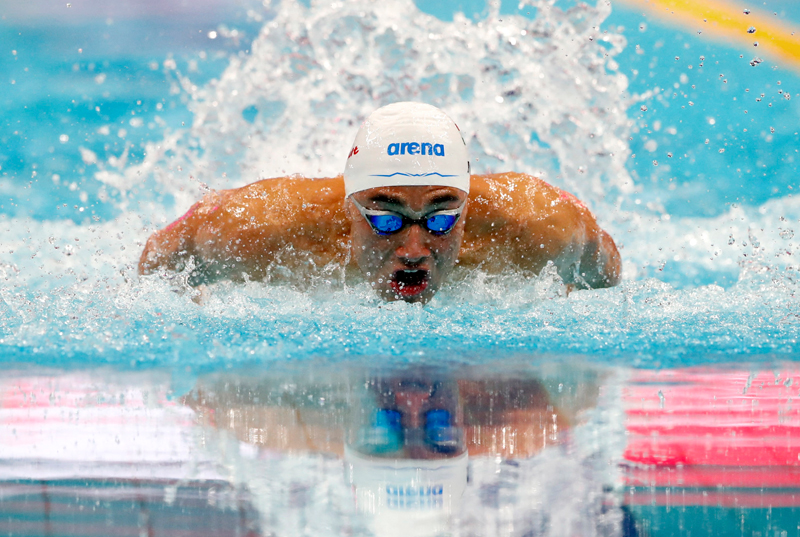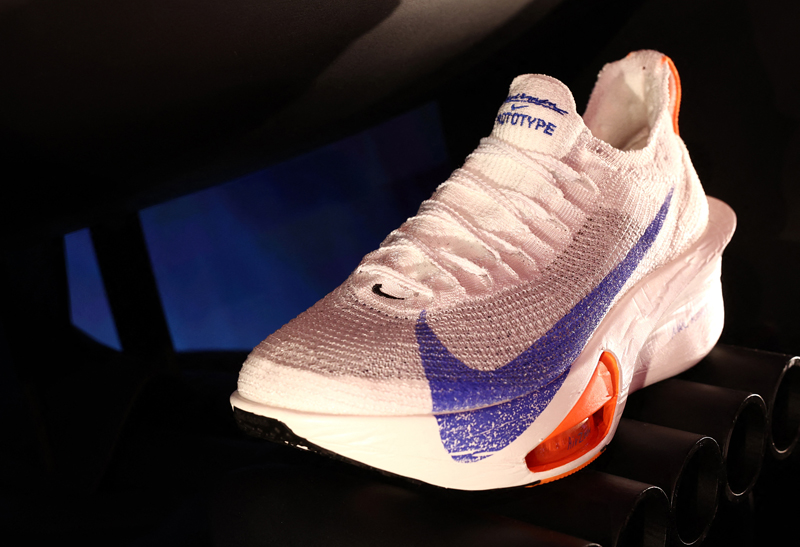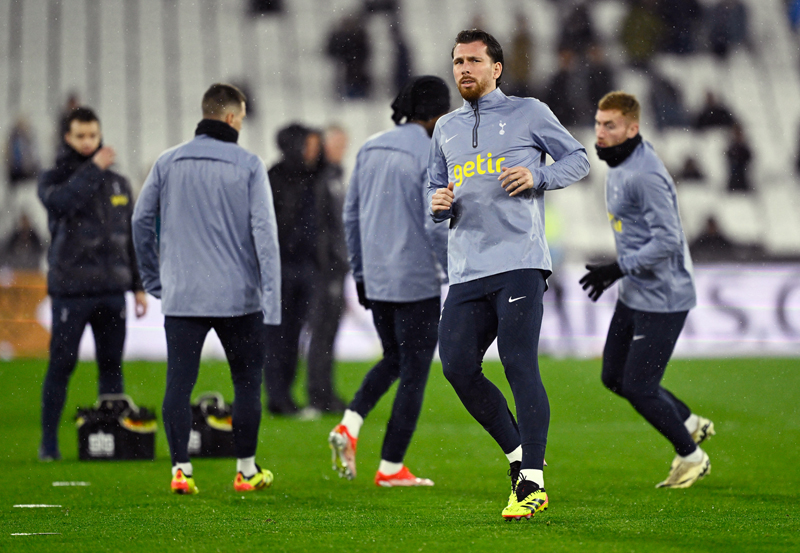You are viewing 1 of your 1 free articles. For unlimited access take a risk-free trial
A no brainer: why IMT matters for all athletes!
SPB looks at brand new research on inspiratory muscle training in swimmers, and explains why athletes seeking maximum performance should definitely include it in a training regime!
Although the science is well documented and the evidence is extremely robust, it is surprising how many athletes are unaware of the benefits of inspiratory muscle training (abbreviated IMT) to enhance athletic performance. However, the research for its benefits continues to accumulate.
The importance of IMT
Before we look at some new evidence, let’s just have a quick recap on what IMT involves and why it can benefit athletes. The inspiratory muscles are more commonly known as the breathing muscles, and include the diaphragm below the ribcage and the muscles in between the ribs. Until the early 2000s, the conventional thinking was that there was no need to train the inspiratory muscles to enhance performance because maximal oxygen uptake (a key measure of endurance performance) is not theoretically limited by the transfer of oxygen across the lungs, but instead by the ability to transport around the body and the working muscles to utilize it. In addition, the respiratory muscles were thought to be ‘super human’, and immune to fatigue, by virtue of their continuous activity throughout life.
However, that all changed in the early 2000s. Researchers at the University of Wisconsin discovered that when the inspiratory muscles are subjected to fatiguing bouts of work (ie breathing against an added external load), they provoked a reflex change in vasoconstrictor output to the limbs(1). In plain English, when faced with fatigue, the inspiratory muscles instruct the cardiovascular control centres to divert blood away from the working limbs and towards them.
Top of the pecking order
Further research demonstrated that if inspiratory muscle work is increased, then leg fatigue is increased, and if respiratory work is reduced (by allowing a ventilator to ‘breathe’ for the subjects) leg fatigue is reduced(2). In a nutshell, the inspiratory muscles appear to be at the top of the ‘pecking order’ for the supply of blood flow; the brain prioritizes oxygen supply to the respiratory muscles in order to keep the vital organs oxygenated – the working limbs are ‘told to take a back seat’, with their oxygenated blood supply dialled down when the respiratory muscles are challenged!
Subsequent research over the past two decades or so has clearly demonstrated that by improving the power and efficiency of the inspiratory muscles (eg with a resistance device such as ‘PowerBreath’), more oxygen can be made available to the working muscles during endurance activities such as running, swimming, cycling, rowing etc, thereby improving performance in these sports(3-6). And more recently, research has also identified that athletes performing in shorter, higher power events such as 800m running can also benefit from IMT – see this article(7).
IMT for swimmers
While IMT appears to help athletes from a wide range of disciplines, there are good reasons why swimmers may find IMT especially useful. Firstly, swimmers cannot breathe freely; the timing of breaths must coincide with the stroke pattern and there are times when the breath needs to be held. There’s also the orientation of the swimmer. Assuming a prone (front crawl, breaststroke and butterfly) or supine (backstroke) position in the water is far from optimum in terms of maximizing diaphragm function. In addition, there’s the hydrostatic pressure exerted by water immersion on the chest cavity – pressure that the inspiratory muscles must work against and overcome. Despite this, very few studies have actually explored the integration of inspiratory muscle training (IMT) into standard swimming training regimens with a view to the impact on performance.
New research
For evidence of the very significant benefits of IMT in swimmers, we can turn to new research by researchers from the Guangzhou Sport University in China(8). In this 43 swimming specialization students aged 18-25 years were randomly allocated to two groups:
· A control group, which followed regular swimming training for six weeks.
· An experimental group, which completed the same regular standard training for six weeks but with an additional program of IMT.
Before and after the 6-week intervention, all the swimmers were assessed for key swimming performance metrics, including 50m and 100m freestyle times, the number of breaths taken per 50m freestyle trial, the distance before the first breath in each 50m freestyle trial, along with various inspiratory muscle function parameters such as vital capacity, maximum inspiratory pressure, maximum inspiratory flow, and maximum inspiratory capacity.
What they found
Following the 6-week training period, the experimental group carrying out additional IMT significantly improved their 50m and 100m freestyle times compared to the control group. They also exhibited improved respiratory function parameters compared to the control group – eg greater maximum inspiratory pressure, flow and capacity, along with fewer breaths per 50m. With such conclusive results, the researchers had no hesitation in recommending that all competitive swimmers should include some IMT training to enhance swimming performance and respiratory function!
Practical implications
Unlike many areas of sports science where the evidence is persuasive but not conclusive and where caveats may apply, the evidence in favour of IMT is extremely robust. It seems that regardless of your sport and ability level, there are real benefits to be had from IMT, and that may particularly be the case for swimmers.
Given the IMT devices are inexpensive, and easy to use, there’s no reason not to recommend their use for all athletes as part of a training program. The time investment required is also minimal. A typical session of IMT might consist of inhaling (using a PowerBreathe or similar device) for around 30 breaths with the resistance adjusted so that you can only just achieve 30 breaths in a time period of 2-3 minutes. Training this way twice a day for a period of 4-6 weeks will produce real benefits for as little as 28 minutes of time invested per week. For a more detailed guide on IMT protocols, a guide by PowerBreathe can be found here. In conclusion, if you don’t already perform IMT, maybe it’s time for some heavy breathing!
References
1. Journal of Physiology 2001; 537:277-289
2. J Physiol. 2006 Mar 1;571(Pt 2):425-39. doi: 10.1113/jphysiol.2005.099697
3. J Strength Cond Res. 2013;27:1643–1663
4. Eur J Appl Physiol. 2005;94:527–540
5. Sports Med. 2012;42:707–724
6. J Strength Cond Res. 2013 Jun;27(6):1643-63
7. Medicina (Kaunas) 2021; Jan 57(1):72. doi: 10.3390/medicina57010072
8. Physiol Behav. 2023 Nov 1:271:114347
Newsletter Sign Up
Testimonials
Dr. Alexandra Fandetti-Robin, Back & Body Chiropractic
Elspeth Cowell MSCh DpodM SRCh HCPC reg
William Hunter, Nuffield Health
Newsletter Sign Up
Coaches Testimonials
Dr. Alexandra Fandetti-Robin, Back & Body Chiropractic
Elspeth Cowell MSCh DpodM SRCh HCPC reg
William Hunter, Nuffield Health
Keep up with latest sports science research and apply it to maximize performance
Today you have the chance to join a group of athletes, and sports coaches/trainers who all have something special in common...
They use the latest research to improve performance for themselves and their clients - both athletes and sports teams - with help from global specialists in the fields of sports science, sports medicine and sports psychology.
They do this by reading Sports Performance Bulletin, an easy-to-digest but serious-minded journal dedicated to high performance sports. SPB offers a wealth of information and insight into the latest research, in an easily-accessible and understood format, along with a wealth of practical recommendations.
*includes 3 coaching manuals
Get Inspired
All the latest techniques and approaches
Sports Performance Bulletin helps dedicated endurance athletes improve their performance. Sense-checking the latest sports science research, and sourcing evidence and case studies to support findings, Sports Performance Bulletin turns proven insights into easily digestible practical advice. Supporting athletes, coaches and professionals who wish to ensure their guidance and programmes are kept right up to date and based on credible science.










